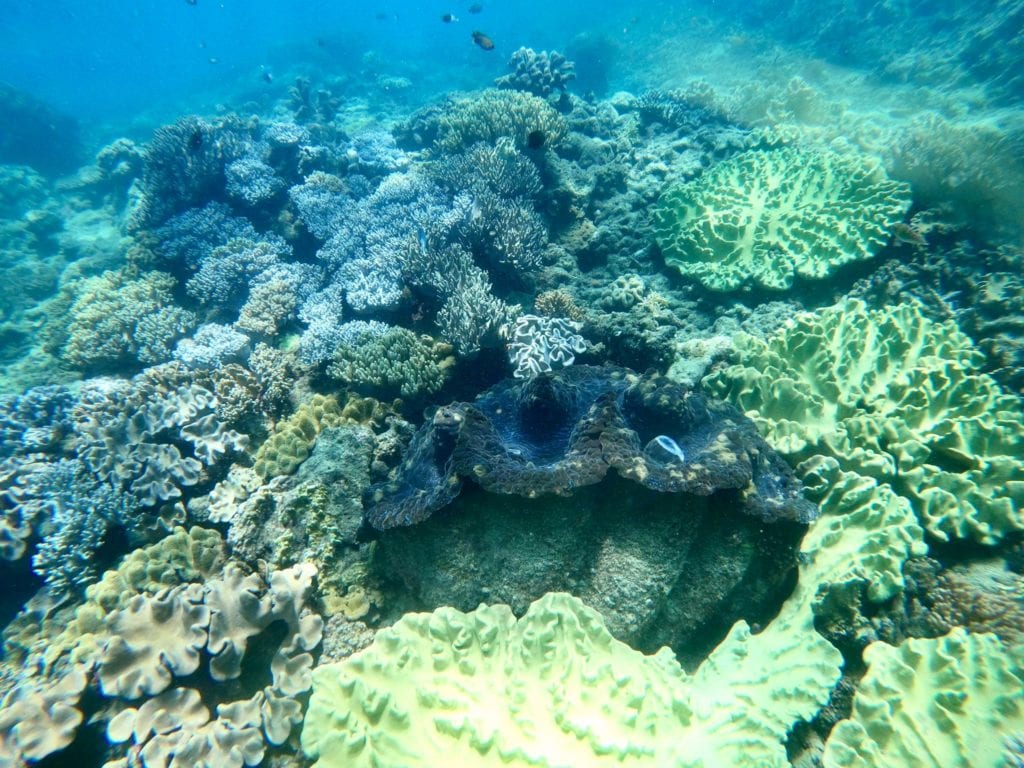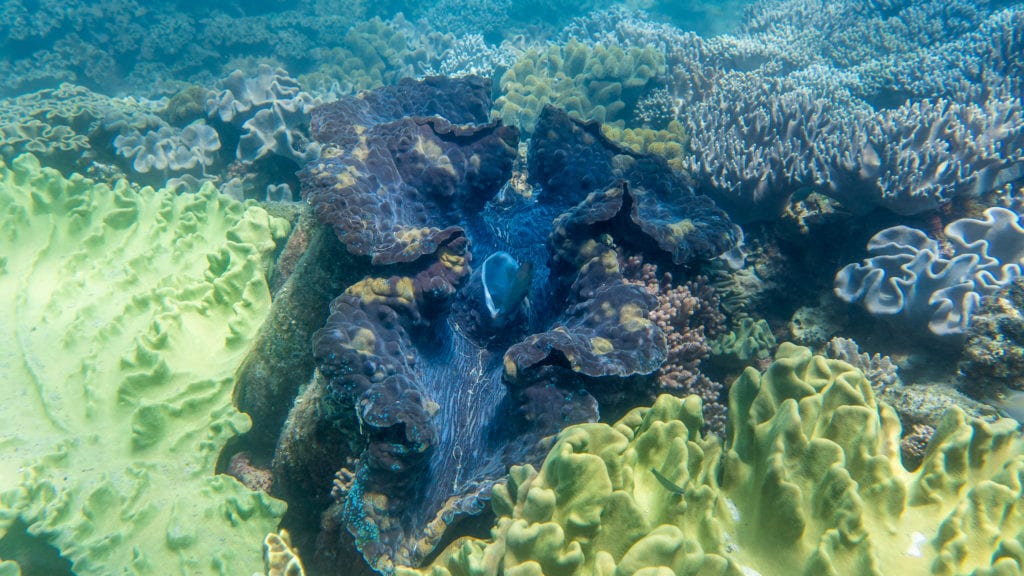The Great 8
The Great 8 are the Great Barrier Reef’s living icons. The creatures we all want to see! Ranging from reptile to mammals, from little to large, the Great 8 wish list reflects the outstanding diversity of the reef. Have you always wanted to see a Giant Clam, or see the magnificent Humpback Whales in their natural environment? Below is everything you need to know about one of the Great 8 and how to increase your chances of seeing them!
The Giant Clam
Giant Clams are the largest molluscs on Earth, in their early stages they fasten themselves to a spot on the reef and will stay there for in excess of 100 years! Growing over a meter in length, these bottom-dwelling behemoths are no doubt one of the Great 8 of the Great Barrier Reef.
Giant clams (Tridacna gigas) achieve their enormity through the process of photosynthesis. Photosynthesis is the process of converting sunlight into proteins and sugars as a food source. The Giant clam hosts algae that live in their tissues called zooxanthellae which used this process providing food to the clam, allowing it to grow. This is the same process used by coral. The clam is also a filter feeder using a siphon to draw in water, consuming microscopic planktons that live in the water column. This filter-feeding technique is a key ecological process responsible for maintaining a healthy balance in the water quality.

Myth Busting
Can clams produce pearls? YES. Giant clams sometimes obtain irritants such as grains of sand which the clam can cover with layers of calcium carbonate which over time form pearls. The largest pearl ever recorded came from a Giant Clam in the Philippines weighing over 6kg.
Are Giant Clams man-eaters? NO. If you’re picturing an oceanic Venus flytrap swallowing a person whole, that’s exactly what this myth would lead you to think. South Pacific legend would have you believe that clams lie in wait to trap unsuspecting swimmers as they pass, and with clams famous for opening and closing when people swim over them, you can see how this story came to be. Clams have little light receptors meaning when something blocks out sunlight, they will close their shell to protect their delicate tissue within. Reality is the muscles close far too slowly to be of any concern for swimmers. So if you are lucky enough to have an encounter with these mighty molluscs, you have nothing to fear. It’s the drop bears on the bush walk you need to be concerned about…

Giant clams are present at several of our snorkel locations on both the Northern Exposure and Southern Lights tour, however, if you want to see them in large numbers make sure you visit our sister company Ocean Safari in the heart of the Daintree rainforest. With half-day trips to Mackay Reef, the crystal-clear waters off Cape Tribulation are home to an abundance of Giant Clams and Sea Turtles amongst other amazing marine creatures.

